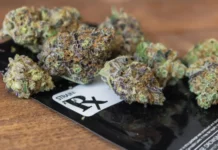Allergies — there are pills for that. Back pain, headaches — pills for those too.
These days it’s almost impossible to think of a medical condition for which not one Food and Drug Administration-approved pill exists for treatment.
So why haven’t scientists done enough research on the active ingredients in marijuana so that pharmaceutical companies could make a pill delivering well-regulated amounts of the beneficial qualities of medical cannabis?
With the increased acceptance of the medicinal qualities of cannabis, it just doesn’t make sense to have this substance stay on the federal Drug Enforcement Agency’s Schedule 1 list, thus prohibiting any research into its benefit for various medical conditions.
After all, Big Pharma has developed a pill for basically everything else!
The lack of research has led to the need to have alternative methods of ingestion, such as smoking or eating marijuana directly. This has led to several dilemmas. First of which, smoking is bad for your health, as some of the same toxins, irritants and carcinogens come with smoking marijuana just like smoking tobacco.
So without any data on the helpful effects of smoking marijuana, it’s hard to know if there are any adverse effects. There’s also no control over the dose, because once again, research is lacking on the appropriate prescribing amount based on the medical diagnosis being treated.
The lack of research has also led to alternative products being sold that may not have any of the active ingredients necessary to actually treat a medical condition.
An online search will find CBD pills touted to be organically grown and THC pills that are supposedly medical grade. But you’ve got to question the purity of products not regulated by the FDA
Cannabidiol (CBD) use is on the rise, either through extracts suspended in oil, alcohol (tincture) or vaporized liquid. The accuracy of the amount of CBD in each formulation varies. In a recent study it was noted that only 26 percent of the 84 sample products studied had an accurate amount of the listed ingredients. That means users may not get enough to alleviate their symptoms, and other psychoactive substances such as tetrahydrocannabinol (THC) could be present in sufficient quantities to produce intoxication or impairment.
It’s true that a quick search online will find CBD pills that are touted to be organically grown and THC pills that are supposedly medical grade. But you’ve got to question the purity of products not regulated by the FDA, along with the lack of research regarding the appropriate dose for any diagnosed medical condition.
Recently the sale of tainted, synthetic marijuana has been linked to multiple cases of severe bleeding and even death in Illinois and New York. People are becoming seriously ill because they are using forms of marijuana that aren’t regulated.
Granted, illegal versions of any drug can enter the marketplace, but if there was a legal form that could maximize the health benefits and minimize any other effects, it would potentially counteract the attraction to the tainted versions of the substance. The only way to figure out which parts of the marijuana plant are medicinal is to do the research to prove it works.
Marinol, the only pharmaceutical based product currently on the market, is the synthetic form of THC. It’s currently FDA approved for use in AIDS-affected patients or cancer patients to deal with nausea and a lack of appetite. But this is only one element of marijuana that has been turned into a prescription drug. There may be many more active substances, but until the federal laws allow research with this plant, the other potential benefits remain unknown.
Current laws do not prohibit research with other potentially deadly substances. Scientists have been able to separate opioids’ analgesic effects from their dangerous respiratory effects. In a study done by the Scripps Research Institute, scientists were able to characterize a range of compounds that block pain without affecting respiration.
Opioid deaths result from this lack of respiratory drive, a side effect of only certain components of the drugs. By finding the pain-relieving parts of common medications like morphine and fentanyl, scientists might be able to isolate the portions of these drugs that treat the symptoms, and avoid the dangerous side effects of taking the higher doses. This may also result in the discovery of the addictive portions of the drugs and not only limit side effects but limit dependence as well.
It’s time that marijuana research be given the same chance.
Studies have shown that the lack of available information on the standard dosing, formulations, potency, and proof of efficacy have resulted in fewer clinicians recommending this treatment to their patients.
It’s not just adults who potentially suffer as a result. Children who have cancer have also been reported to benefit from the use of medicinal marijuana, but are limited in their ability to tolerate the beneficial effects by the potential negative effects of its use. Due to the illegality of funding for research, when there are no other options, parents and clinicians are left to experiment, hoping to avoid adverse consequences along the way.
The only way to make medical marijuana safer is for the federal government to allow research to take place legally to further characterize the different active ingredients and find the best dose for the various medical conditions it’s purported to treat.
Once it’s legal, the best companies to do this type of research are those with the most experience in medicinal research and development – the pharmaceutical industry. The Food and Drug Administration has strict guidelines on the purity of any drug that’s produced, and is the only organization with the means to control the manufacturing process to ensure the safety of the public.
When the most beneficial qualities of medical marijuana can be delivered in a pill, the drug might reach its potential in treatment of seizures and intractable nausea while providing an alternative to addictive pain medication.














